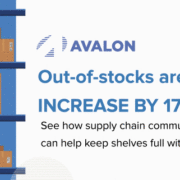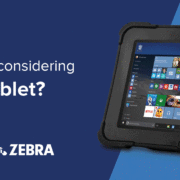A little over a third of warehouses are investing in technology plans to integrate RFID as a foundational part of their automation plans. From increased inventory control to real-time asset visibility, RFID tracking is known for facilitating instant locationing and 99.99% accuracy. However, several steps are crucial to ensure seamless and scalable RFID tracking. One of these steps involves assessing the best fit RFID tag to avoid damaging interference. When building a reliable RFID tracking system, consider the following components in your RFID tag:
- Application environment – While RFID can carry a myriad of benefits to even the most unique warehouses, tags can be severely impacted by certain kinds of surfaces such as metals and liquids. Fortunately, newer tag technology like Zebra’s on-metal labels can be engineered to retain legibility on dense materials, yet preliminary surface considerations should be made to verify if a different tracking system is the best fit.
- Frequency type – Tags frequencies can involve low, high, or ultrahigh frequencies depending on the reader’s distance and processing speeds. Low frequencies generally cost less and are more resistant to water and metal applications. On the other hand, high frequency tags sport larger memory capacity and easier readability for more accurate first-time scans. Lastly, ultrahigh frequencies can be read from 25 feet away or more while identifying entire containers of shipped goods in mere seconds. However, ultrahigh frequencies are more sensitive to application environments, limiting their use.
- Composition of your tag – As with any other kind of label, adhesive strength and surface type play a large role in label longevity. Improper adhesive strength can lead to peeled and torn edges, thus hindering legibility. Although rough surfaces may not implicate scanning, they damage printheads overtime, leading to premature printhead failure and costly downtime.
- Memory capacity – Larger tag capacities can hold greater details, yet they are not always necessary. Therefore, investing in smaller memory capacity can dramatically lower operational costs without compromising your solution’s functionality. In contrast, higher memory tags may employ better encryption for dependable data security and accuracy.
Designing a suitable label with Zebra’s Certified Inlays
Built with stringently tested materials for consistent performance, Zebra’s Certified Consumables can be customized to match your application and environment requirements without printer voids. Tags can be tailored to…
- Survive high temperatures, moisture, UV light, etc.
- Accommodate desired memory space without burdening your budget
- Match challenging surfaces like metal, water, and dense materials
- Stick onto smaller curved surfaces with flag designs
With so many different options available, the most suitable first step is to schedule an RFID consultation to assess your workflows’ compatibility with RFID tracking systems. In doing so, your team can work with RFID specialists to design a tailored visibility solution combining readers, tags, and software that adapts to your operational needs.











